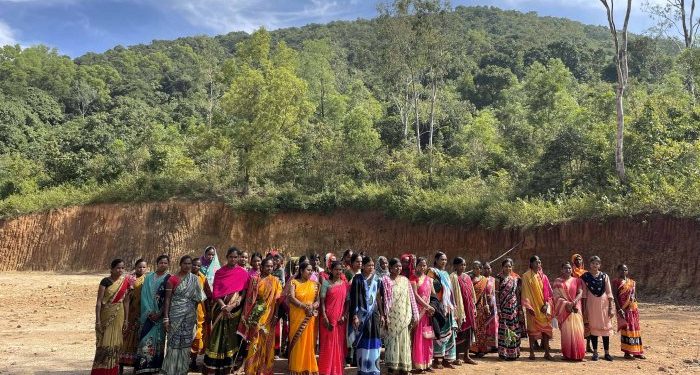Koraput: Their forest is lovely, dark and green, a stream flowing through it, birdsong echoing down the hill to their homes and fields, and the wildlife back. It’s taken 30 years of conservation, say the women of Anchala who didn’t let their spirit flag for even one day of those three decades. It was sometime in early 1990 that the stream flowing through Mali ‘parbat’ in Anchala village in Koraput district narrowed to barely a trickle and there was not a green shoot in sight. It was time, the villagers decided, to bring back life to their revered mountain.
From consciously reducing dependency on firewood through community cooking to adopting sustainable, organic and ecofriendly farming, the villagers, led by the women, did it all. And today, a lush 250-acre mountainous forest surrounds Anchala, the water nourishing their fields with vegetables and other farm produce and enough for their domestic needs. Shuparna, who was 15 at the time and newly married, remembers how it started. “We imposed a strict fine of Rs 500 on anyone cutting wood and created an environment where the person was reprimanded in public for cutting wood. We made them feel guilty for their actions. After a point, it started working and more and more people started joining our movement,” Shuparna said. A guard from the village was appointed to maintain vigil.
To ensure no one illegally enters the forest area to cut wood, a family was designated to guard the forest from dusk to dawn. “We did not have money to pay so we made a deal that whoever watched the forest would get in exchange 10 kg of finger millet or ragi. This would be collected from each household,” Shuparna, one of those incharge of guarding the forest, said. Lali, among the many women from the village who were part of the ambitious project, explained why the forest came to be overexploited. There was no LPG cylinder so the entire village was dependent on wood and coal for cooking. “We changed our cooking habits. We made do with less wood and cooked for three families together so as to reduce the usage of wood and coal,” the 65-year-old said. “Simultaneously, we started planting tamarind, sandalwood and neem among trees in the mountain.”
Six months later, the first results were seen. “The first plant grew and it was celebrated like a festival in our village,” said Savita. “Now even wildlife has started living in this jungle which was barren earlier. Barking deer and wild boars are now a common sight in this jungle,” Lali said. For Selwanti, the biggest moment was when the stream that had started drying began to replenish. “I still remember it vividly. My house is close to the stream and one morning I could hear the sound of water flowing, something that had stopped long ago as the stream had reduced to a trickle. I rejoiced and called everyone to see the fruit of our effort,” she said.
“We grow many vegetables here like peas, cabbage and ginger among other things,” she added. To ensure further productivity, the women have switched to sustainable farming techniques – chemical free pesticide made from cow manure, jaggery and flour and using organic compost made from chicken waste, neem and ash. They received help from the NGO Foundation for Ecological Support for learning these techniques. These women tribal farmers have also been brought under the Agriculture Production Cluster (APC) programme led by the Odisha government and Bharat Rural Livelihoods Foundation.
Under APC, they received support from various government departments such as Horticulture, Mission Shakti, Panchayati Raj & Drinking Water, Women and Child Development, and Odisha Livelihood Mission to help build their organization.






































